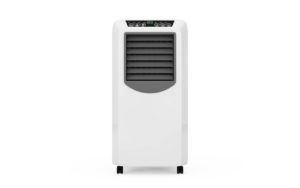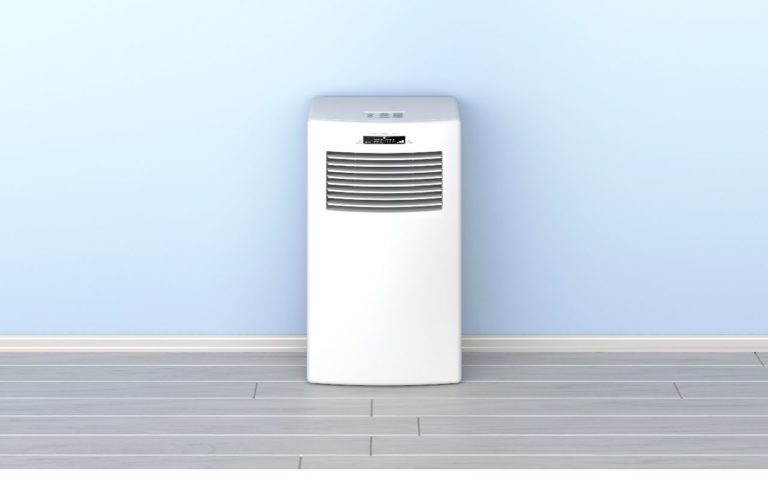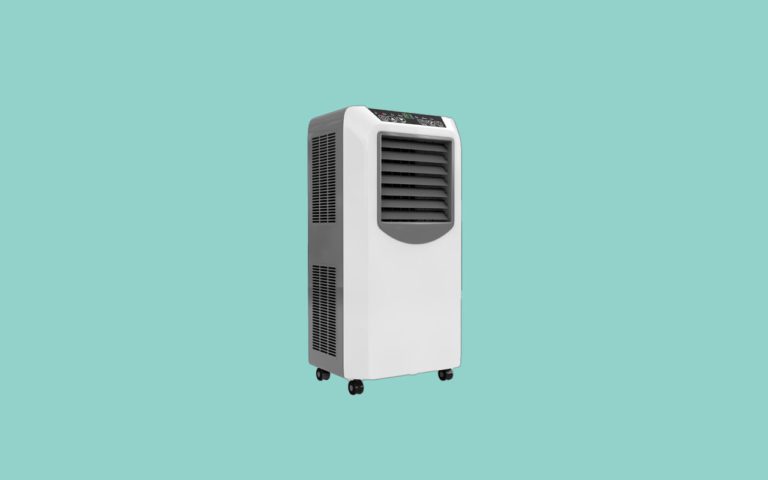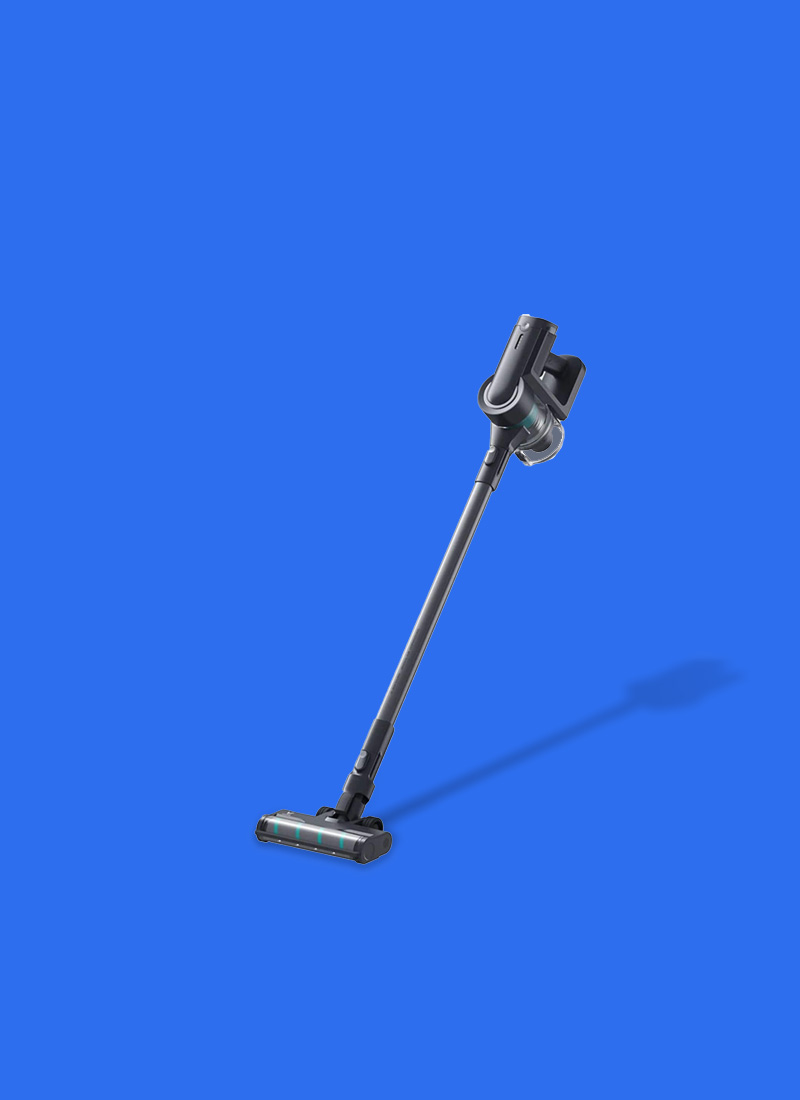ⓘ We are reader-supported and may earn a small commission at no additional cost to you if a purchase is made through one of our links.

Do you ever find yourself sweating bullets in the middle of summer?
If so, you may need to invest in a portable air conditioner. These nifty devices have been growing in popularity in recent years, as they offer a more affordable and convenient alternative to traditional air conditioning units.
But how do they work? In this blog post, we will take a closer look at the science behind portable air conditioners and how they keep us cool during the hottest months of the year!
The principle of cooling and dehumidifying in portable air conditioners
Most portable air conditioners work using the same basic cooling and dehumidification principle.
They are designed to cool, ventilate, and dehumidify the air in a room by drawing in hot and humid air from the inside & outside of the room, passing it over a cold evaporator coil, and then releasing the cooled and dehumidified air back into the room.
To do this, portable air conditioners must be vented to the outside through a window, door, or wall. The best technique to vent hot air is to install a portable AC in the push-out window or sliding glass door.
By drawing in hot and humid air from the outside and releasing cooled and dehumidified air back into the room, it can create a comfortable environment for you to relax in.
The first thing you need to know about portable air conditioners is that they all have three key components:
- A refrigerant, which cools the air
- A compressor for compressing the refrigerant and
- An engine or fan, that’s responsible for moving the air
Of course, there is a bit more to how a portable air conditioner works than just this basic principle.
Portable air conditioners come with different capacities depending upon what you need them for from 8k BTU all the way upwards towards 15k+. The higher the BTU, the more powerful the portable air conditioner will be.
Air conditioners work by circulating refrigerant gas through a system of coils. These coils absorb heat from the air, which is then released outside.
The evaporator coil is made up of metal tubing.
The thermodynamic principles that govern how AC units work are very similar to those that govern refrigerators. Both use circulating fluid to transfer heat from one place to another.
The refrigerant gas, often known as R-410A, is a liquid chemical that has low volatility and density in its solid state at temperatures above -61 degrees Fahrenheit but must be cooled under extreme pressure to keep it liquid. It becomes a vapor after passing through an “expansion valve.
This process soaks up an impressive amount of heat. The heat is pulled in from the blowing room air. This is done through a series of metal tubes and attached fins. The capture and delivery of the heat to the outside for vaporization is accomplished by another side of this system.
The compressor of a refrigerant condenser unit draws in the vaporized refrigerant, which is then squeezed into a liquid state. A fan helps to remove the heat that was previously absorbed by the gas.
The refrigerant then goes back to the evaporator coil to start all over again.
The fan and the condenser coil of a portable air conditioner are inside the room you’re trying to cool off. In most cases, this makes them much noisier than an AC unit with outdoor components.
So, here’s a summary of how the different parts of a portable air conditioner work together to keep us cool!
- The fan is responsible for moving all of that hot and humid air from inside your house, through the portable AC unit’s vents.
- The inside of the AC unit is like a giant refrigerator. The hot humid air comes into this space, where it’s cooled down by condensation on cold coils. The heat from the air is transferred to refrigerant in coils, which then cools down the air and extracts the moisture. The refrigerant fluid turns into a gas, which is what makes your AC work.
- The fresh air is then sent back into the room.
- The moisture from the air is gathered in a bucket and can be vented outside or you have to remove it manually.
- The refrigerant is compressed into a gas form and blasted onto condenser coils by the compressor. It can discharge heat via an exhaust vent positioned near your window/sliding door.
- This process continues to keep you cool!
Portable air conditioners come in two varieties: single-hose and dual-hose. The difference between the units lies in their circulation system, but both work on similar principles. More on these now!
If you’re looking to keep cool this summer make sure to read our buying guide on the best portable air conditioners.
Single-Hose Portable AC Unit
A single-hose portable air conditioner has one hose that both takes in air from the room and expels the hot air outside.
The unit pulls in warm air from the room, cools it down, and then pushes the cooled air back into the room.
At the same time, it also pulls out hot air and expels it through the same hose.
That means that you won’t feel any pressure in your eardrums, which is a good thing. However, it also means that the unit isn’t as effective at cooling a room.
The one thing you need to know about single hose portable air conditioners is that they can’t operate properly without drawing in outside cooler airflow. To offset lower pressures, just close any doorways into your space and make sure it’s not leaking!
Double-Hose Portable AC Unit
A dual-hose portable air conditioner has two hoses: one that takes in air from the outside and another that expels hot air to the outside.
The double hose portable air conditioner works by using two hoses. The first is for bringing in fresh outdoor air, and the second acts like a ventilator to release hot indoor vapor from your home or office space.
The benefit of this system is that it’s much more effective at cooling a room than a single-hose unit. They tend to have a higher energy efficiency rating (EER).
The single hose type is the most popular portable air conditioner. Double-hose units cost more and require additional installation work on your part to make them operate efficiently in hot weather conditions.
Conclusion
We hope this article has helped you understand how a portable air conditioner works!
The technical details of how a portable air conditioner works may be perplexing, but the bottom line is that it’s comparable to a refrigerator. It takes in warm air, cools and dehumidifies it, and then expels the cooled air back into the room. Don’t forget to keep your portable Air conditioner clean now and then to get the best out of it.
Thanks for reading and stay cool!





